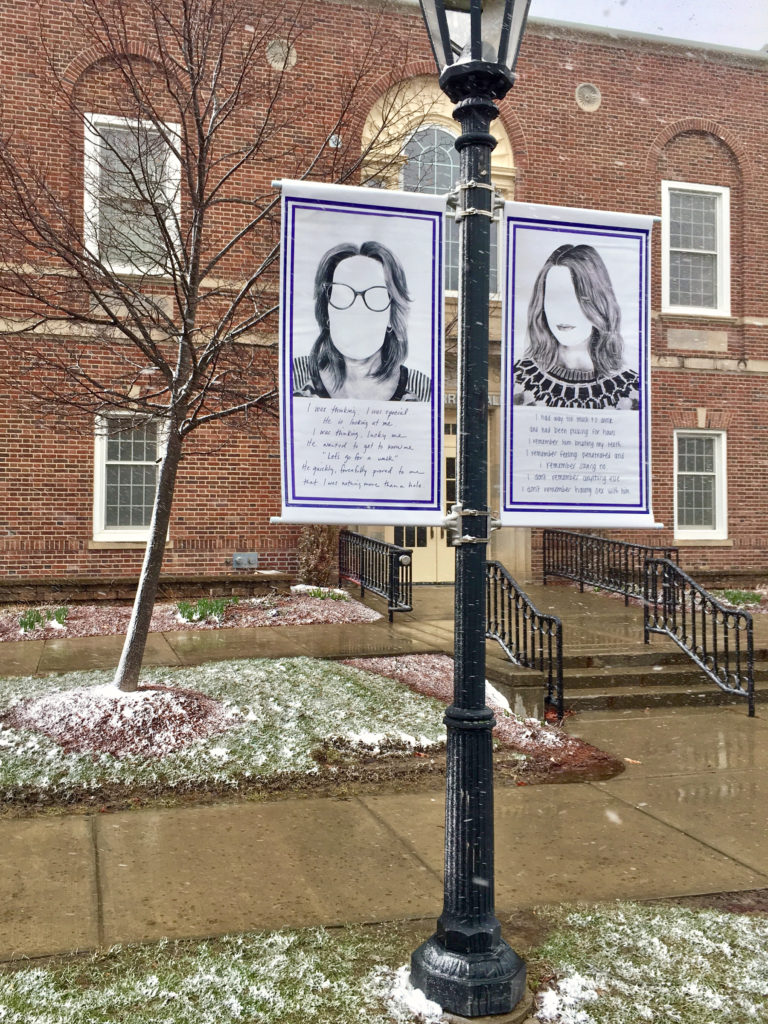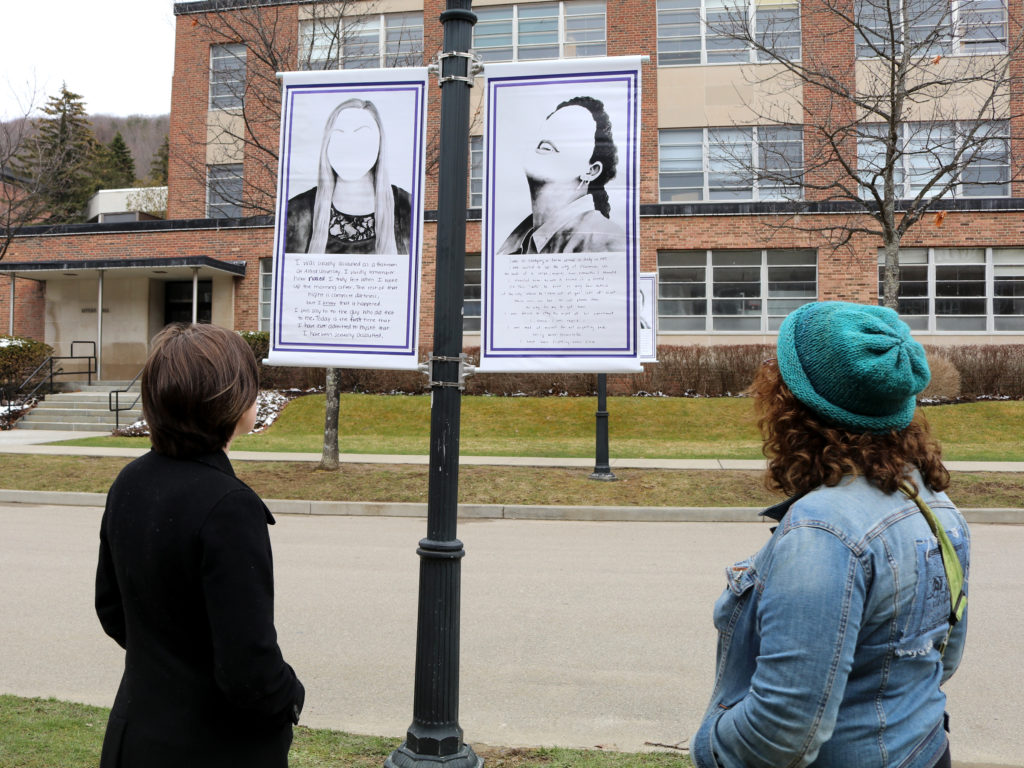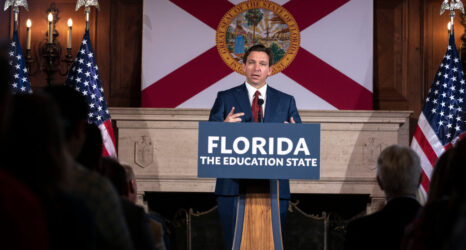This time last year, eight women steeled themselves to take the stage for a town hall meeting on sexual assault in the hills of Western New York. Brought together by artist Traci Molloy, this was the first moment that many of these women, all current or former students of Alfred University (AU), publicly acknowledged the grim fact that their bodies were violated, or the sadness, guilt and humiliation of being groped or raped.
In the moments leading up to the event, one panelist shook uncontrollably; another momentarily retreated inside of herself. But on stage that evening, they celebrated the power of having a platform for their stories. We suffered in silence and felt shame, but it was not our fault,” one survivor said, “I’ve always hoped that someday people would listen to my story. Now that I see it happening, I finally feel a sense of freedom.”
For the past two years, Molloy has interviewed and painted portraits of over 20 AU women connected by the common bonds of surviving sexual assault or sexual harassment. Her work entered campus life in two forms: through public engagement and open discussions moderated by the artist herself, and by way of her portraits of survivors, hung as banners, that lined the walkway of Alfred University’s Academic Alley in 2018 during Sexual Assault Awareness Month and again during new student orientation.

Handwritten text below each portrait tells us what happened, in her own words. Collectively, they tell us:
I was naive and flattered that he picked me out of all the others.
I trusted him as a friend. He forced himself on me.
I remember him brushing my teeth. I remember feeling penetrated and I remember saying no.
He said that my body language showed I wanted it. Some days, I don’t think I want to be alive.
I was sexually assaulted as a freshman. I still say hi to the guy who did that to me.
As an AU alum, a professor at the University of Michigan and an artist, I’ve followed Molloy’s powerful work and AU’s radically responsive actions to address issues around consent—all of which has unfolded alongside the ever-worsening policies of Education Secretary Betsy DeVos that impose greater deterrents to survivors who courageously come forward, and my own institution’s decision to maintain its public image rather than directly acknowledge survivors’ claims.
“Against My Will” is Molloy’s creative disruption of the placid facade of campus life, and AU’s administrators and trustees are encouraging this disturbance. Other universities would benefit from adapting their model of partnership—and heeding lessons from the outspoken ways Molloy and AU are welcoming testimony from survivors and exposing all students to issues around consent.
Molloy and I walked the promenade of AU’s Academic Alley many times as fellow students there in the early 1990’s, talking daily to one another about campus life; we were social tendons, hopeful activators of an enduring institution. Yet, at AU’s crossroads of Harder Hall’s artists and McMahon’s engineers, there was little discussion about the early autumn weeks as a red zone of extraordinary vulnerability for first-year women, or the wrongness of interpreting a woman’s intoxication as “consent.”
Unlike our national tripartite system of government, most academic administrations govern themselves. The same body that makes the rules determines who has access to the rulebooks, administers the Title IX Office, oversees the investigative process, decides the rulings, governs academics and protects the university image. When one body controls both self-promotion and oversight, it’s easy to see how a university can publicly condemn sexual assault and then fail to take action to protect survivors.
Every college that Molloy visits as a visiting artist has inevitably heard and confronted stories of negligence on the part of administrators. When one female student at Ashland University reported being raped, and the accused student claimed not that she hadn’t said no, but that she hadn’t said no enough, the university corroborated his justification by assigning her a paper on consent. When an “Against My Will” participant narrowly escaped sexual assault after six drunk male co-eds invaded her home, she asked a faculty member for protection—and was instead assigned to work on a lab project with the lead perpetrator.
Molloy’s work—which preceded #MeToo, but works in harmony with it now—is one of the forces confronting these failures. The radical proposition of “Against My Will” is to bring the trauma of sexual assault to light in a very public way. And Alfred University—a small institution most familiar to artists and material science engineers—is, remarkably, allowing itself to be challenged and changed by it.

Before “Against My Will,” AU already had in place an unusual and humane process for reporting and investigating sexual assault: whereas many Title IX offices are led by attorneys, who often prioritize protecting the University over the student, AU approaches the process from an educational perspective through a three-member, mixed-gender team of faculty and staff that interviews the reporting student and investigates.
The investigative teams are trained to be respectful of survivors’ privacy and pain—a consciously developed strategy that prevents the university’s reputation and power from being the most important force in the room. First-year students are told about these protections during campus orientation, and don’t spend a single night on campus without knowing about them. Issues around sexual assault are discussed and acted out in orientation skits—with student input and with particular emphasis on helping students grasp that campus rape does not usually involve “jump out of the bushes” violence, but is more likely instead to look like coercion or confusingly gradual acts of intimidation by acquaintances or trusted friends.
It is against this backdrop that AU strongly supported “Against My Will,” intentionally showcasing the banners during the prospective student tour season, the Spring fete referred to as Hot Dog Day and autumn orientation. And it is through that public reckoning that AU is also becoming a leader in the conversation about consent on campus.
AU President Mark Zupan attended Molloy’s town hall meeting on campus last April, along with other Deans and administrators. With the survivors on stage, the artist immediately opened the discussion to the full audience. The conversation that followed ranged from the #MeToo movement’s painful, though necessary, triggering of repressed memories; to the inability for some female students’ male friends to understand physical boundaries; to the imperative for teaching empathy in childhood to prevent assault in adulthood.
But although the event was effective as both cathartic release and empathetic co-sharing, Molloy felt it failed to reach the audience necessary for real change. “Men have to be present in these conversations,” she told AU alum and Board of Trustees Chair Greg Connors on the ride to the airport, acknowledging that few male co-eds had ventured into the forum, and only one or two had spoken.
Connors, the father of two sons, had begun to observe firsthand the way boys begin to ignore the word “no”—first as they tickle and roughhouse with each other, and later in sports—potentially impairing their “ability to decipher” the meaning of “no” in intimate situations as young adults. Impacted by Molloy’s work, and disturbed by the pattern of men’s de-sensitization to “no” echoed within the survivors’ statements that shape it, he turned to Zupan. Together, they acknowledged the need to “take responsibility in educating men to have this consciousness, and in exposing all students to values of respect and appreciation of others.” Defying the snail’s pace timing of academic bureaucracy, they also funded and initiated a required program called Common Ground.
Designed in the few months between Molloy’s installation and the 2018 autumn semester, Common Ground aims to bring all students to the table to “hear each other’s stories.” The pilot program, led last autumn by professors Melissa Ryan and Robert Stein, exposed students to media and readings challenging gender expectations, such as sexualized images of women and aggressive masculinity.
What makes AU so uniquely capable of acknowledging sexual assault in all its complexities and as a whole community, beyond platitudes and through action? AU’s Dean of Students, Norm Pollard, attributes its social consciousness to an ethos established by the University’s founding fathers and mothers—who purposely “settled in a secluded three-sided valley” to form a culture free of harassment. Connors wonders if the kind of public scrutiny that a large academic institution faces daily makes many universities overly conservative. AU’s seclusion in the hills and off-the-radar status frees the trustees to take immediate actions addressing painful situations directly—from eliminating Greek life in 2002 following a hazing death to welcoming Molloy’s work into the heart of the school, and then extending these values into the lives of all first-year students through Common Ground.
Connors also credits the central pillars of arts and engineering for creating a community with a broad range of visible diversity. In the very public valuation of both creativity and engineering, the message to AU students is that there’s endless room to express yourself and that difference is valued. It’s not unusual to see a bevy of art students there dressed in red vests creating imaginary lines in public.
And last April, students stood for long moments under public portraits, absorbing the words of female survivors.





